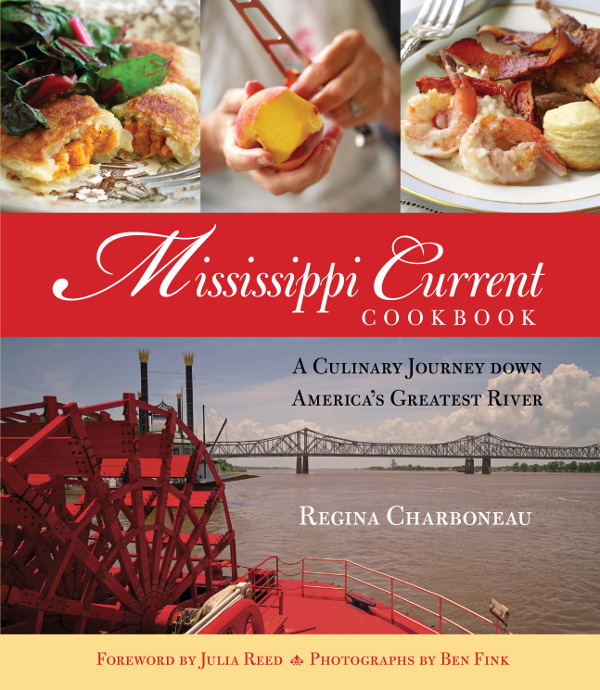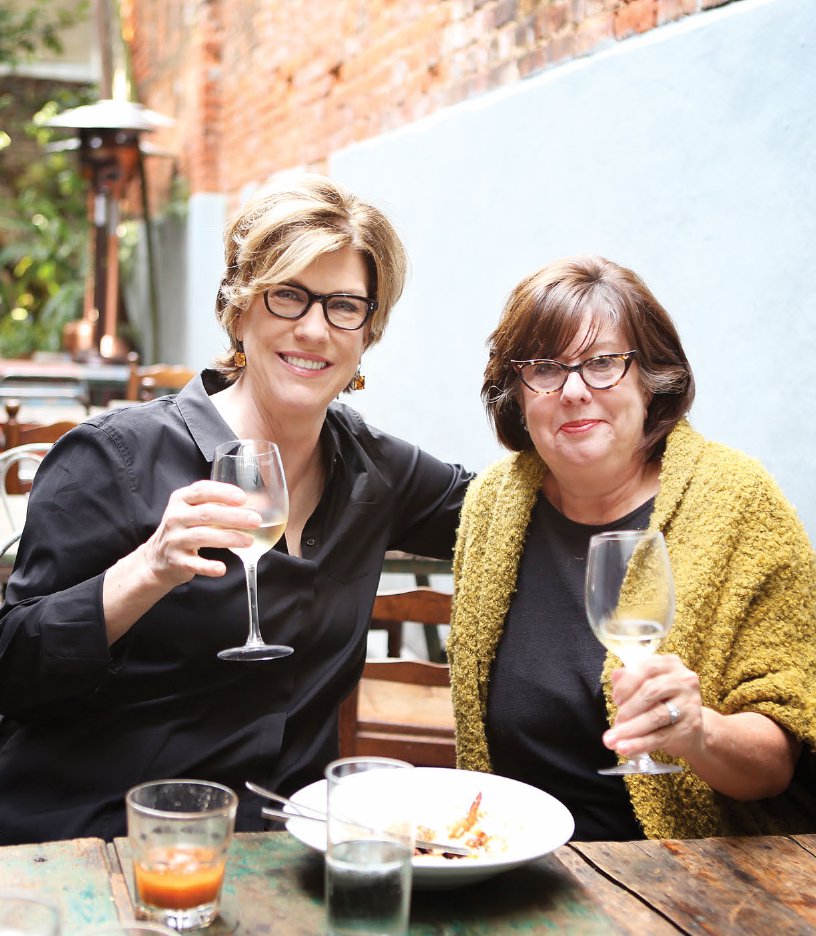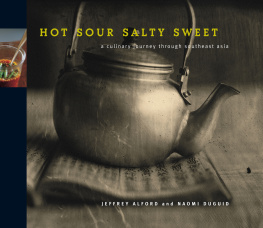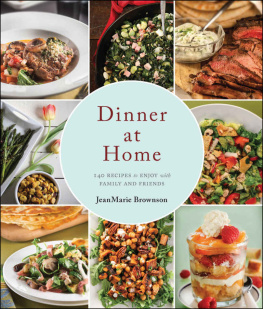
Copyright 2014 by Regina Charboneau
ALL RIGHTS RESERVED. No part of this book may be reproduced or transmitted in any form by any means, electronic or mechanical, including photocopying and recording, or by any information storage and retrieval system, except as may be expressly permitted in writing from the publisher. Requests for permission should be addressed to Globe Pequot Press, Attn: Rights and Permissions Department, PO Box 480, Guilford, CT 06437.
Lyons Press is an imprint of Globe Pequot Press.
All photographs Ben Fink except the following: pp. vii, 82, 89, 93, 95, 96, 109, 112, 130, 272, and 274 by Stephen Flowers and Kate Stanley; pp. 14, 16, 19, 240, 289, and 277 by Regina Charboneau; p. 160 licensed by Shutterstock.com; p. 202 courtesy American Queen Steamboat Company; p. 258 courtesy Bridget Green.
Project editor: Meredith Dias
Text design: Sheryl Kober
Layout artist: Nancy Freeborn
Library of Congress Cataloging-in-Publication Data is available on file.
ISBN 978-1-4930-0923-7 (epub)

The first time I met Regina Charboneau was in her kitchen at Twin Oaks, the 1832 plantation house in Natchez she and her husband bought and lovingly restored in 2000. It could not have been a more fitting and (for me, at least) delightful introduction. She was making biscuits, a fairly routine task that in Reginas hands becomes a tour de force. Drawing from the croissant-making skills she learned as a culinary student in Paris, she rolls and folds and rolls and folds until the dough is streaked with gorgeous buttery ribbons. The end products are the flakiest, most meltingly delicious biscuits Ive ever tasted, in a long and active life of tasting them.
Since then, Ive returned to Twin Oaks many times for infusions of what those of us lucky enough to be in Reginas orbit all refer to as Biscuit Lovewhich is also a metaphor for her great company, innate graciousness, and bottomless generosity. I would happily follow Regina up and down the Mississippi for an extended dose of her hospitality and more examples of her inventive and always superb cooking. But now in Mississippi Current she has brought the River and its bounty home to me and all her lucky readers instead.
Like Regina, I was born on the Mississippi, about two hours north of Natchez in the Delta town of Greenville. My fathers familys roots go back many generations in Caruthersville, Missouri, where theres a waterfront statue of my great-grandfather, a river engineer. Growing up, some of the most exciting social events I attended were the christenings of towboats at our once busy downtown port. In this book, I learned that the J.M. White, a riverboat so opulent that it was known as the floating palace, traveled the river between New Orleans and Greenville from 1868 to 1886.
So I know what Regina, a seventh-generation Natchezian, means when she says she has Mississippi River water running through her veins. But what I didnt know about was the richness of the culinary traditions along the River from Minnesota to its mouth. While Ive tasted Kentucky Burgoo and know well the pleasures of New Orleanss Eggs Sardou, gin fizzes, and Sazeracs, I had no idea of the crawfish parties hosted by Minnesotas sizable Swedish population or the Oktoberfest gatherings introduced by the German settlers in La Crosse, Wisconsin. I grew up eating the cultural phenomenon known as the Delta hot tamale (and cant wait to make and taste Reginas ingenious version made with smoked catfish), but now Im equally fascinated by the toasted ravioli that St. Louiss Italian citizenry has made a local tradition.
Mississippi Current is a cultural and culinary treasure. Anyone interested in our countrys vivid history or native foodways should make this fascinating journey with the ever fabulous Regina.
Julia Reed

The Mississippi River is Americas greatest. At 2,340 miles in length, the River has provided our nation with an essential waterway for transporting goods and people, played an important role in wars and territorial disputes, and even become part of the American vernacular. How often have you heard someone ask, Is that east or west of the Mississippi? Popular food brands have different names east and west of the River: Edys ice cream is west and Dreyers ice cream east; Hellmanns mayonnaise west and Best Foods east. Call letters assigned to radio stations east of the Mississippi begin with the letter W, while those west of the River start with the letter K.
The Mississippi River also has an extraordinarily rich culinary history influenced by those who have inhabited its shores and waters, making it one of the most significant foodways in America. While many people are familiar with food from the lower stretch of the RiverMemphis barbecue, Louisianas Cajun cooking, and New Orleanss Creole traditionsfew are aware of Minnesotas fish fries, Wisconsins Oktoberfest celebrations, and Arkansass farm suppers.
Join me on a culinary journey with menus and recipes from up and down the Mississippi, from the headwaters in Minnesota to the mouth at the Gulf of Mexico. Youll discover the foods and flavors as we visit in the cities and towns, farms, and historical homes on the River.
I am of the seventh generation of my family to be born in Natchez on the River. Food and entertaining have always been at the center of my life. My mother was known for hosting endless dinners and parties with what seemed like no effort at all. People in town still talk about my fathers cooking skills that came from his deep Louisiana roots. When I decided to travel away from the River, I really traveled awayAnchorage, Paris, San Francisco, Minneapolis, and New York. But no matter how many miles I traveled or the number of years I stayed away, none of those places really felt like home. Home was and always will be Natchez. And just like my parents, my life has always centered around food and entertaining. On my return, my husband Doug and I purchased Twin Oaks, primarily to raise our sons Jean-Luc and Martin as eighth-generations on the River. This historic house was perfect for my love of entertaining. Its six guest rooms allow people to come and partake in my culinary weekends, with cooking classes and tours of historic homes in Natchez, ours and others. Having learned so much about historic preservation with our 1832 home, we were hooked enough to find one of the oldest buildings in the Mississippi Territory and the oldest building in Natchezthe 1789 Kings Tavernto restore. Its now a restaurant offering wood-fired flatbreads and craft cocktails featuring many of the liquors made along the River, including the Charboneau Rum created by Doug and our son Jean-Luc in a distillery on the Kings Tavern property. I would say I am home to stay.
Before my return, my Natchezian cooking roots went with me wherever I lived. After attending cooking school in Paris, I began to combine southern cooking and many of the ingredients that were native to the Lower Mississippi regionpecans, catfish, crawfish, oysters, and collard and mustard greenswith classic French influences. No matter where I lived or cooked, the foods of my River were woven into my dishes.
In my years away, Minneapolis held me for a while for two reasonsits location on the Mississippi and because its my husband Dougs hometown. From the first day we met in Anchorage many years ago, it was the River that connected us, even though our culinary vocabularies were foreign to each other. For the first time I heard words like pierogi, spaetzle, brats, Polish sausage, and White Castle. My culinary lexicon likewise held new words for him: gumbo, oysters, mustard greens, jambalaya, and muffalettos. Through the years, our glossaries blended and expanded along with the cultural changes along the Mississippi.












